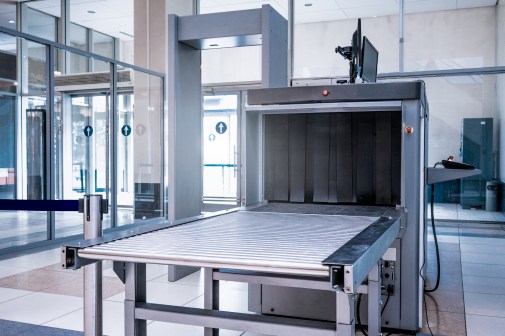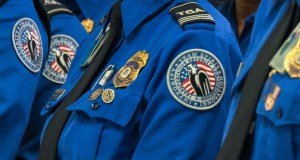TSA moving forward with airport screening system deployment

Several senators voiced concern over the Transportation Security Administration’s slow rollout of new airport screening technology at a hearing Wednesday.
Commerce Committee members Sens. Roger Wicker, R-Miss., and Shelley Moore Capito, R-W.Va., questioned acting Deputy Administrator Patricia Cogswell about the delay in meeting the TSA Modernization Act requirement.
TSA lost about 90 days because a contract for 300 computed tomography (CT) screening systems awarded to Smiths Detection, Inc. was protested. But the protest was resolved, and TSA plans to deploy the machines along with 500 credential authentication technology (CAT) systems this fall, Cogswell said.
CT machines gather additional sensor data when screening bags and bins, meaning travelers can leave electronic items like laptops inside — speeding up the process.
More advanced machines will be able to assess liquids that are currently banned in carry-on luggage.
“We are still working to develop the algorithm to be able to truly tell the content and what type of liquid it is,” Cogswell said.
The CT and CAT machines will go to a variety of airports, big and small, with plans to deploy an automated screening lane that diverts bags and bins it flags as potentially dangerous and returns bins to the front automatically, she added.
To date, TSA has met 46 percent of the 180 requirements in the Modernization Act including a global aviation security review, creating an air cargo division and establishing a Surface Transportation Advisory Committee.
Insider threats
Sen. Richard Blumenthal, D-Conn., asked what TSA is doing in the aftermath of an American Airlines mechanic sabotaging a plane an hour before takeoff at Miami International Airport in July.
“It indicated a vulnerability to insider threats,” Blumenthal said.
TSA recently established an Aviation Security Advisory Committee insider threat subcommittee to recommend a “multi-factor, multifaceted” response relying on a combination of background checks and access control, Cogswell said.
In February, the Department of Homeland Security Office of Inspector General conducted a covert audit of access controls to airport secure areas and found six vulnerabilities tied to operations, technology and training. TSA concurred with the classified audit’s findings.
“A number of these recommendations are ones highlighting some areas that we also believe play into the larger discussion we are having around insider threat,” Cogswell said.
Pipeline security
A separate, Government Accountability Office report released in December found TSA lacked a process for deciding when to update security guidelines for pipelines, which the agency oversees — all 2.7 million miles of them. GAO continues to review TSA’s updated procedures.
TSA has now dedicated a section to surface transportation as part of its modernization effort, combining inspectors specializing in pipeline and cybersecurity. The inspectors are currently going through additional training, Cogswell said.
“We are making strong progress against all of the GAO recommendations,” she said. “I think most important from our perspective is looking at how we are re-energizing and revitalizing the competencies and knowledge of our workforce in this space.”






